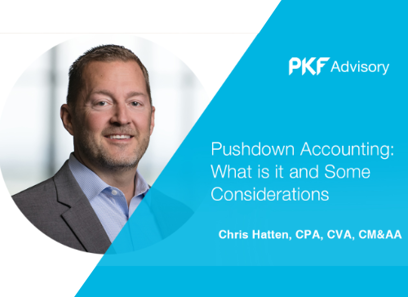Cybersecurity Advisory 2025 Explained: What Leaders Need to Know
Wiki Article
Why Every Organization Demands a Solid Cybersecurity Advisory 2025 Approach
In 2025, companies encounter a swiftly evolving cyber threat landscape. The elegance of assaults, driven by innovations in modern technology, demands a solid cybersecurity consultatory method. This technique not just boosts threat analysis yet likewise grows a society of security awareness among workers. As essential facilities ends up being progressively susceptible, the need for aggressive measures becomes clear. What actions should companies take to guarantee their defenses are durable sufficient to endure these difficulties?The Evolving Cyber Risk Landscape
As cyber threats remain to progress, organizations need to remain vigilant in adjusting their security procedures. The landscape of cyber risks is noted by enhancing sophistication, with foes employing sophisticated techniques such as expert system and device understanding to make use of susceptabilities. Ransomware assaults have actually surged, targeting important infrastructure and demanding large ransom money, while phishing plans have actually become extra misleading, often bypassing standard safety protocols.In addition, the increase of the Internet of Points (IoT) has actually increased the attack surface area, providing new entrance factors for cybercriminals. Organizations face tests not only from outside threats however also from insider risks, as employees may accidentally compromise sensitive information. To properly battle these evolving risks, services have to focus on aggressive approaches, including regular updates to their protection framework and continual worker training. By remaining educated concerning the most up to date fads in cyber risks, organizations can better secure their properties and preserve strength in an increasingly hostile digital environment.
The Significance of Risk Analysis
Understanding the significance of risk assessment is important for companies aiming to fortify their cybersecurity position. A comprehensive danger assessment identifies susceptabilities and potential risks, enabling organizations to prioritize their resources successfully. By reviewing the chance and influence of different cyber dangers, organizations can make informed choices concerning their safety and security measures.Additionally, threat analyses assist organizations understand their conformity obligations and the legal implications of data violations. They supply insights right into the organization's current safety practices and highlight locations needing improvement. This aggressive method promotes a culture of safety and security awareness amongst workers, encouraging them to identify and report prospective risks.
Conducting normal threat evaluations makes certain that companies continue to be dexterous in attending to emerging dangers in the vibrant cyber landscape. Inevitably, a durable threat analysis procedure is important in creating a tailored cybersecurity method that lines up with organizational objectives while protecting vital properties.
Positive Procedures for Cyber Defense
Applying proactive procedures for cyber protection is important for organizations seeking to alleviate prospective hazards before they escalate. An extensive cybersecurity approach should consist of routine vulnerability evaluations and infiltration screening to recognize weaknesses in systems. By conducting these evaluations, organizations can resolve vulnerabilities prior to they are manipulated by destructive stars.Additionally, continuous monitoring of networks and systems is vital. This involves employing innovative hazard discovery modern technologies that can recognize uncommon task in real-time, permitting for speedy responses to potential intrusions. Staff member training on cybersecurity ideal methods is important, as human error frequently presents substantial threats. Organizations must promote a culture of safety and security awareness, making certain that staff members understand their role in protecting delicate info.
Lastly, establishing an incident feedback strategy allows organizations to react properly to breaches, minimizing damages and healing time. By implementing these proactive measures, organizations can considerably boost their cyber protection pose and protect their electronic assets.
Enhancing Remote Job Security
While the shift to remote work has used adaptability and convenience, it has additionally introduced substantial cybersecurity obstacles that companies must deal with. To improve remote work protection, companies require to apply robust safety procedures that safeguard delicate information. This includes the use of digital exclusive networks (VPNs) to secure internet connections, making certain that employees can access business sources safely.Furthermore, companies need to mandate multi-factor authentication (MFA) to add an additional layer of protection for remote access - M&A Outlook 2025. Routine training sessions for staff members on identifying phishing attempts and preserving safe and secure techniques are also necessary
Companies need to perform normal safety and security analyses to recognize susceptabilities in their remote job facilities. By taking on these strategies, organizations can effectively mitigate risks related to remote work, protecting both their information and their online reputation. Stressing a society of cybersecurity recognition will certainly additionally equip workers to contribute to a secure remote workplace.
Leveraging Cloud Technologies Securely
A growing number of organizations are migrating to cloud modern technologies to boost operational efficiency and scalability, but this change likewise necessitates strict safety and security measures. Effectively leveraging cloud solutions needs a comprehensive understanding of possible susceptabilities and risks connected with common settings. Organizations ought to execute strong accessibility controls, guaranteeing that just accredited personnel can access sensitive data. Security of data both in transit and at remainder is essential to protecting info from unauthorized gain access to.Regular audits and surveillance can aid recognize abnormalities and possible risks, permitting organizations to react proactively. Additionally, taking on a multi-cloud technique can lower reliance on a solitary supplier, potentially lessening the impact of breaches. Employee training on cloud safety best methods is important to promote a security-aware society. By integrating these procedures right into their cloud strategy, organizations can harness the advantages of cloud technologies while mitigating security risks efficiently.
Preserving Client Trust and Track Record
Just how can organizations make sure that customer trust fund and credibility stay undamaged in an increasingly electronic landscape? To attain this, companies must focus on openness and aggressive communication. By clearly outlining their cybersecurity procedures and promptly dealing with any type of prospective violations, they can cultivate a culture of count on. Consistently upgrading customers regarding safety methods and prospective dangers shows a dedication to securing their information.Additionally, companies need to spend in thorough cybersecurity training for staff members, making certain that every person recognizes their duty in shielding consumer details. Carrying out robust safety and security steps, such as multi-factor authentication and encryption, more enhances the company's commitment to keeping client depend on.
Celebration and acting on customer comments concerning safety and security practices can reinforce relationships. By being receptive and flexible to customer concerns, companies not only safeguard their track record however additionally enhance their trustworthiness in the market. Therefore, an unwavering concentrate on cybersecurity is necessary for maintaining consumer depend on.
Ensuring Regulatory Conformity and Legal Protection

A strong cybersecurity advising approach helps companies identify relevant policies, such as GDPR, HIPAA, and CCPA, and apply required actions to follow them. This strategy not just guarantees conformity but likewise boosts lawful defense against prospective violations and misuse of information.
Companies can benefit from routine audits and analyses to evaluate their cybersecurity position and recognize susceptabilities. By fostering a culture of conformity and constant enhancement, businesses can alleviate threats and show their dedication to safeguarding delicate details. Inevitably, buying a robust cybersecurity technique improves both governing conformity and lawful defense, protecting the organization's future.
Often Asked Concerns

Just How Can Organizations Identify Their Certain Cybersecurity Demands?
Organizations can identify their certain cybersecurity demands by carrying out danger analyses, assessing existing Reps and Warranties safety and security actions, analyzing potential risks, and engaging with stakeholders to recognize susceptabilities, eventually developing a customized technique to deal with special challenges.What Budget plan Should Be Designated for Cybersecurity Advisory Services?

Just How Frequently Should Cybersecurity Approaches Be Updated?
Cybersecurity techniques must be upgraded a minimum of yearly, in addition to after substantial cases or changes in innovation (Transaction Advisory Trends). Regular reviews ensure efficiency against advancing hazards and compliance with governing requirements, preserving organizational durability against cyber risksWhat Credentials Should a Cybersecurity Consultant Possess?
A cybersecurity consultant need to possess relevant accreditations, such as copyright or CISM, extensive experience in risk management, knowledge of conformity laws, solid logical abilities, and the capability to interact complicated ideas successfully to diverse audiences.Just How Can Organizations Gauge the Efficiency of Their Cybersecurity Method?
Organizations can determine the effectiveness of their cybersecurity strategy with regular audits, keeping track of event response times, analyzing threat knowledge, performing staff member training analyses, and examining conformity with market requirements and policies to ensure continual enhancement.Report this wiki page